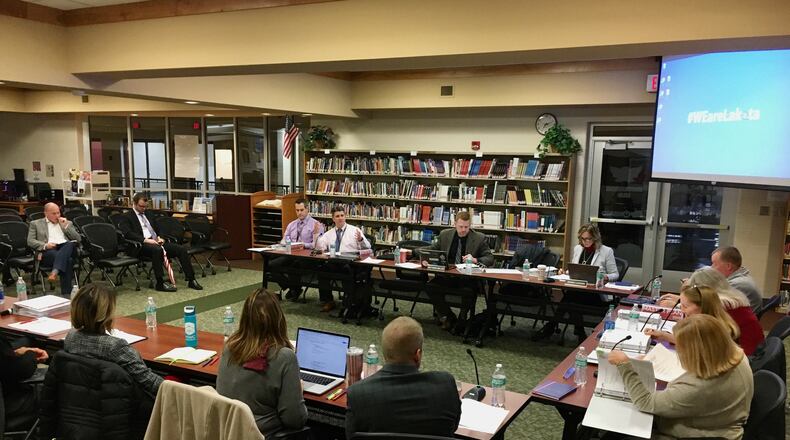But nothing has yet been decided, board members emphasized, especially whether Lakota would later commit to staying in the state process by fulfilling the state stipulation of also asking local taxpayers to pay for the remaining school building costs through a tax hike.
And no estimated total dollar amount for any new school construction or renovation projects was discussed at the meeting.
Under the state commission’s Expedited Local Partnership Program (ELPP), Lakota could in the future qualify for state funds that would cover an estimated 26 percent of total costs but that percentage – derived from past building assessments and other infrastructure information submitted to the commission – could change, cautioned school officials.
Applying for the state’s ELPP financing involves a years-long process that is first initiated by a non-binding resolution required to be passed by the Lakota school board, stating its intentions but not locking Lakota into any agreement with the state program.
The board’s resolution, which members will vote on during its regular meeting Monday Dec. 9, does not legally commit Lakota to pursuing a school tax hike later but rather is a place holder of sorts for the ELPP process, said school officials.
Such a resolution by the board allows the district to begin participation in the ELPP and move into line along with other Ohio school districts which are also considering applying for ELPP funding for their possible, future school facilities projects.
The Ohio ELPP option is also being considered by Monroe Schools and has been previously used to build new schools in Ross, Hamilton, Talawanda and Middletown schools.
Six of Lakota’s 22 schools were built in the late 1950s and 1960s. Others were built in subsequent decades but some lack the learning spaces offered by more modern schools in the region, said Lakota officials.
Lakota officials said any move further in the ELPP application process - should a board resolution be approved Monday - would involve extensive community outreach meetings, surveys and other means to explain the funding process and gauge public interest before any later, binding votes the board might take to possibly put a proposed tax increase on the ballot of a yet-to-be-determined amount.
There was no timetable discussed by the board for any such scenario.
Board member Brad Lovell said “it’s the community’s decision ultimately.”
About the Author
